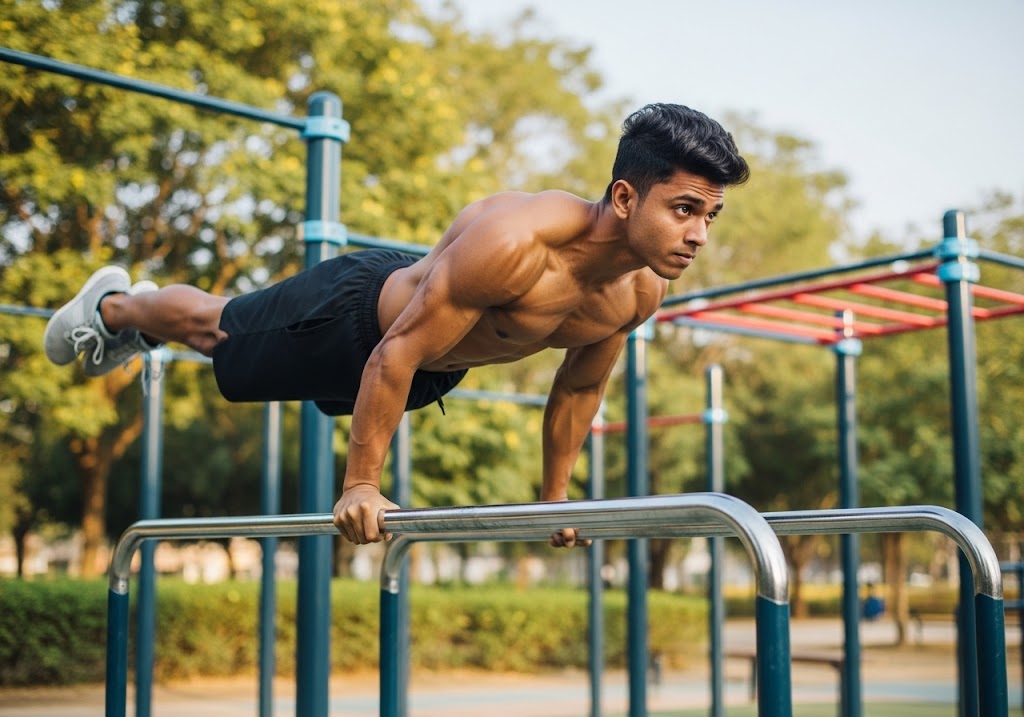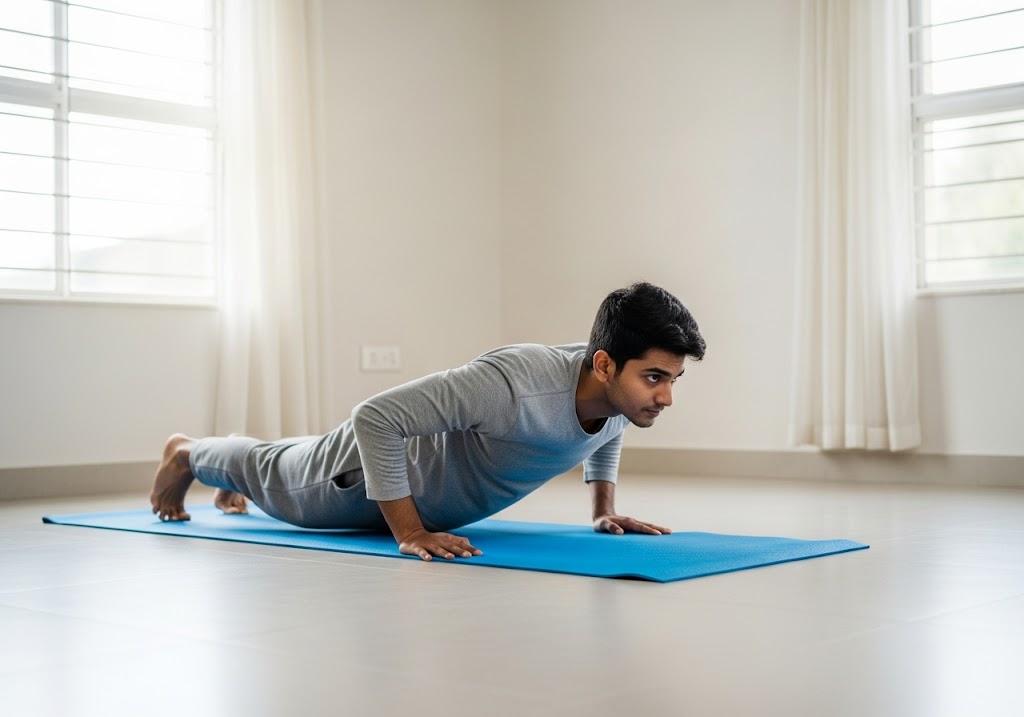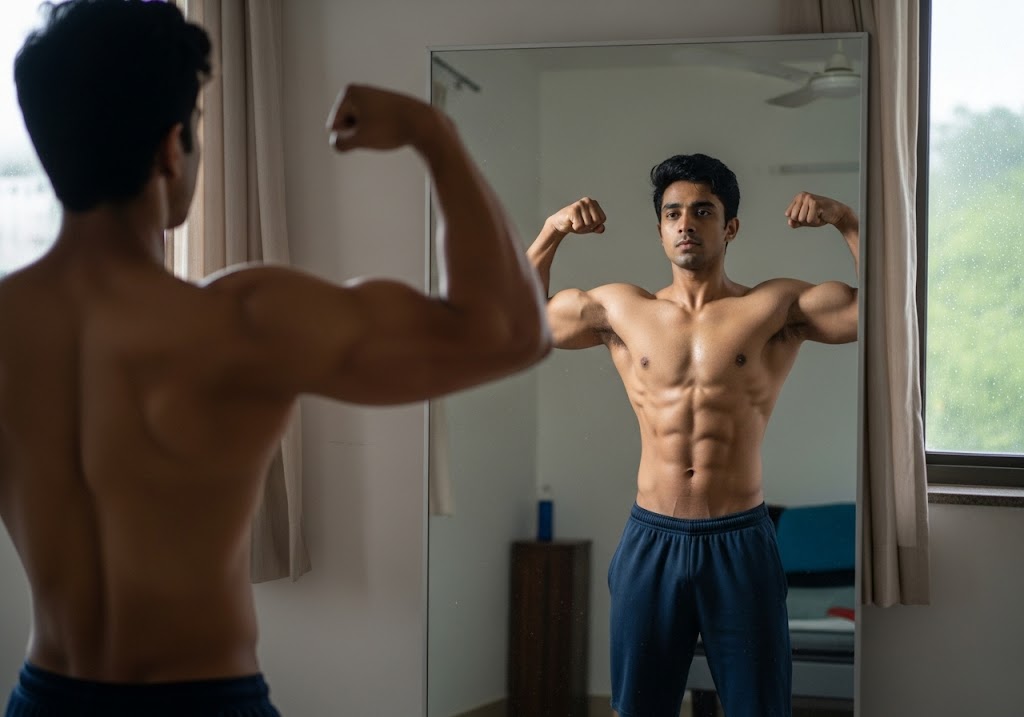15 Best Unilateral Exercises for Balanced Strength are: Single-Arm Push-up for chest, One-Arm Row for back, Single-Leg Squat for legs, Lunges for glutes, Single-Arm Press for shoulders, One-Leg Deadlift for hamstrings, Side Plank for core, Single-Arm Pull-up for back, Step-ups for legs, Single-Leg Glute Bridge for glutes, One-Arm Chest Press for chest, Single-Leg Calf Raise for calves, Lateral Lunges for legs, Single-Arm Cable Row for biceps, and One-Leg Hip Thrust for hamstrings.
Want to fix muscle imbalances and build balanced strength throughout your body? Unilateral exercises work one side of your body at a time, using one arm or leg independently while the other side rests. This type of training helps each side of your body develop equally, improves balance and coordination, and strengthens your core muscles. Unlike regular exercises where both arms or legs work together, unilateral exercises challenge each side separately for better overall development.
Learning what unilateral exercises are and how to use them properly can transform your training results by identifying and fixing strength differences between your left and right sides. This complete plan covers the most effective single-limb movements for building balanced muscle development, improving core stability, and preventing injuries through targeted training approaches.
Table of Contents
15 Best Unilateral Exercises – Master Single-Limb Training Today
These fifteen proven exercises represent the most effective unilateral exercises for building balanced strength, correcting imbalances, and improving functional movement patterns. Each exercise challenges one side of your body independently while engaging stabilizing muscles for complete development.
| Exercise | Primary Target | Equipment | Difficulty | Core Demand |
| Single-Arm Push-up | Chest, Arms | Bodyweight | Advanced | Very High |
| One-Arm Row | Back, Biceps | Dumbbell | Intermediate | High |
| Single-Leg Squat | Legs, Glutes | Bodyweight | Advanced | High |
| Lunges | Legs, Glutes | Bodyweight/Weights | Beginner | Moderate |
| Single-Arm Press | Shoulders, Arms | Dumbbell | Intermediate | High |
| One-Leg Deadlift | Hamstrings, Glutes | Bodyweight/Weights | Intermediate | High |
| Side Plank | Core, Shoulders | Bodyweight | Intermediate | Very High |
| Single-Arm Pull-up | Back, Arms | Pull-up bar | Expert | Very High |
| Step-ups | Legs, Glutes | Platform | Beginner | Moderate |
| Single-Leg Glute Bridge | Glutes, Hamstrings | Bodyweight | Beginner | Moderate |
| One-Arm Chest Press | Chest, Arms | Dumbbell | Intermediate | High |
| Single-Leg Calf Raise | Calves | Bodyweight | Beginner | Low |
| Lateral Lunges | Legs, Glutes | Bodyweight | Beginner | Moderate |
| Single-Arm Cable Row | Back, Biceps | Cable machine | Intermediate | High |
| One-Leg Hip Thrust | Glutes, Hamstrings | Bodyweight | Intermediate | Moderate |
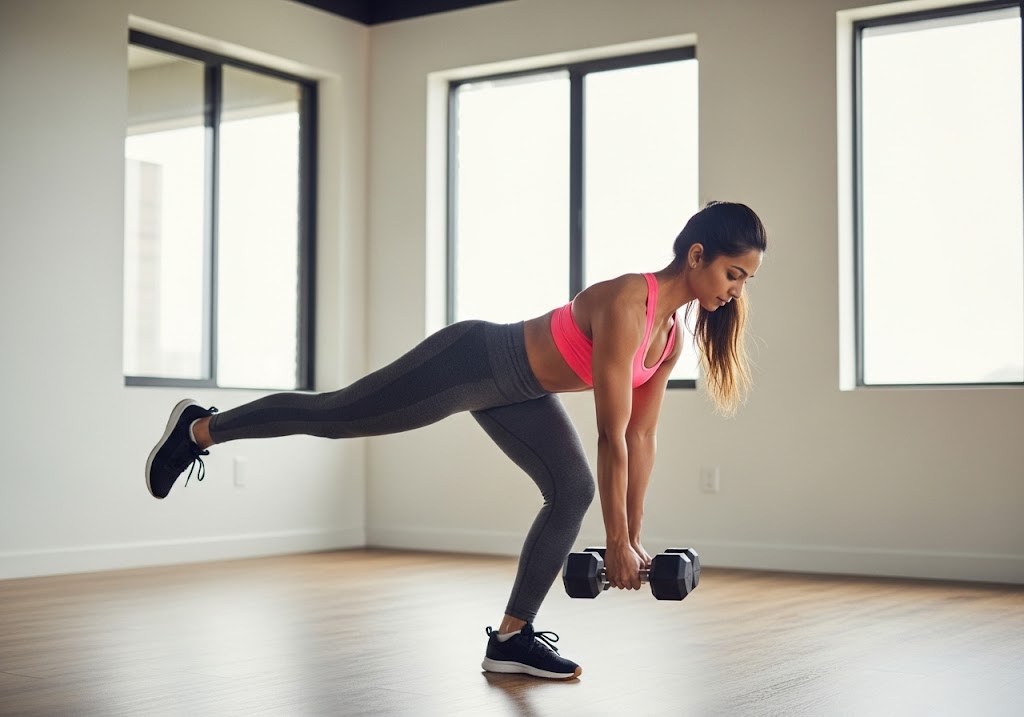
1. Single-Arm Push-up
Single-Arm Push-ups represent the ultimate upper body unilateral exercises, requiring incredible strength and stability from your core and working arm. Start with incline variations on stairs or boxes before progressing to floor level. This exercise builds impressive unilateral strength while highlighting any imbalances between sides that need attention.
2. One-Arm Row
One-Arm Rows effectively target your back muscles while challenging core stability and grip strength simultaneously. Use dumbbells, kettlebells, or resistance bands to perform this foundational pulling movement. Focus on keeping your torso stable and pulling through your elbow rather than your hand for maximum back activation.
3. Single-Leg Squat
Single-Leg Squats challenge lower body strength, balance, and mobility through demanding unilateral movement patterns. Also known as pistol squats, these unilateral exercises require significant ankle, knee, and hip mobility along with considerable leg strength. Start with assisted variations using TRX straps or holding onto a stable surface.
4. Lunges
Lunges provide an excellent introduction to unilateral exercises for beginners while offering countless progression options. Forward, reverse, and lateral lunge variations target different muscle groups and movement planes. Add weights, increase range of motion, or perform walking lunges to increase difficulty progressively.
5. Single-Arm Press
Single-Arm Presses develop shoulder strength and stability while challenging your core to resist rotation and maintain proper posture. Perform standing overhead presses, chest presses, or incline presses with one arm at a time. This unilateral training approach reveals strength differences between sides effectively.
6. One-Leg Deadlift
One-Leg Deadlifts improve posterior chain strength, balance, and hip stability through challenging single-limb movement patterns. Start with bodyweight versions focusing on balance and form before adding external resistance. This exercise strengthens hamstrings, glutes, and lower back while improving proprioception significantly.
7. Side Plank
Side Planks build incredible core strength and stability through isometric holds that challenge your obliques and deep stabilizing muscles. Progress from knee support to full side planks, then add leg lifts or arm movements for increased difficulty. These unilateral exercises are essential for balanced core development.
8. Single-Arm Pull-up
Single-Arm Pull-ups represent the pinnacle of upper body unilateral strength and require years of progressive training to achieve. Start with assisted versions using resistance bands or partner assistance. This exercise builds incredible pulling strength while demanding perfect technique and core stability throughout.
9. Step-ups
Step-ups provide functional lower body training that mimics daily activities like climbing stairs while building single-leg strength. Use various platform heights and add weights to progress difficulty. Focus on controlled movement and avoid pushing off the bottom leg for maximum single-limb activation and strength development.
10. Single-Leg Glute Bridge
Single-Leg Glute Bridges isolate glute strength while improving hip stability and addressing common imbalances between sides. Perform on the floor or elevated surface with shoulders on a bench for increased range of motion. This exercise is perfect for activating glutes and improving hip extension patterns.
11. One-Arm Chest Press
One-Arm Chest Presses build unilateral pushing strength while challenging core stability and shoulder coordination. Perform on a bench or stability ball using dumbbells or cables for resistance. This exercise reveals strength imbalances while building functional pressing power that transfers to daily activities.
12. Single-Leg Calf Raise
Single-Leg Calf Raises target each calf independently while improving ankle stability and balance. Hold onto a wall or railing for support initially, progressing to hands-free versions as balance improves. These simple unilateral exercises help prevent ankle injuries and improve single-leg stability.
13. Lateral Lunges
Lateral Lunges target the often-neglected frontal plane of movement while building hip stability and leg strength. Step wide to one side, sitting back into the hip while keeping the other leg straight. These unilateral exercises improve mobility and strength in multiple directions.
14. Single-Arm Cable Row
Single-Arm Cable Rows provide constant tension throughout the range of motion while challenging core stability and grip strength. Use various grip positions and angles to target different areas of your back. This versatile exercise works well for both beginners and advanced practitioners.
15. One-Leg Hip Thrust
One-Leg Hip Thrusts maximize glute activation while challenging hip stability and core strength. Perform with shoulders elevated on a bench and drive through one heel to lift your hips. These powerful unilateral exercises build impressive glute strength and improve hip function significantly.
For comprehensive bodyweight training that includes unilateral movements, exploring calisthenics exercises provides excellent foundation exercises for single-limb development.
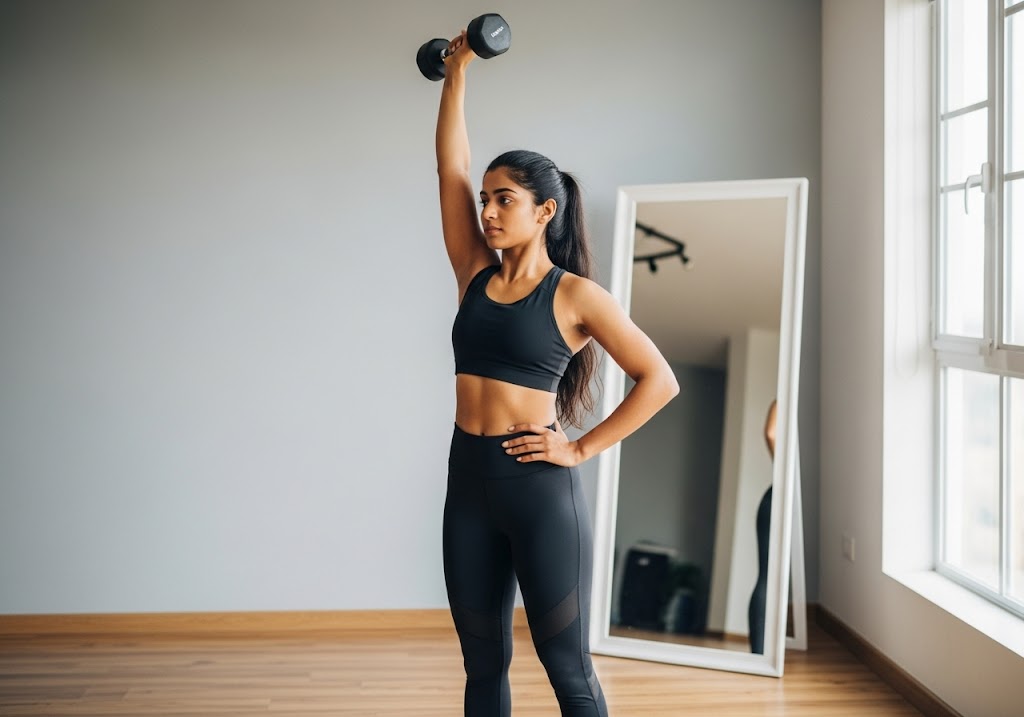
What Is a Unilateral Exercise?
Understanding what are unilateral exercises helps create more effective training programs that address imbalances and improve overall strength. Unilateral exercises work one side of your body at a time, allowing each arm or leg to develop strength independently without compensation from the stronger side.
This training approach contrasts with bilateral exercises where both limbs work together simultaneously. While bilateral movements have their place, unilateral exercises reveal and correct strength differences that bilateral training often masks, making them essential for balanced development and injury prevention.
What Exactly Are Unilateral Exercises?
Unilateral exercises specifically target one limb at a time, creating unique training stimulus that bilateral exercises cannot provide. These movements force each side of your body to work independently, revealing strength imbalances and coordination issues that need attention for optimal performance and injury prevention.
The word “unilateral” means “one-sided,” perfectly describing these exercises that isolate individual limbs for targeted development. Whether you’re performing single-arm presses or single-leg squats, unilateral exercises challenge your body’s ability to generate force and maintain stability with just one limb working at a time.
For targeted core training that complements unilateral work, calisthenics ab workout provides excellent exercises for building the stability needed for advanced single-limb movements.
Why Is Unilateral Training Beneficial?
Unilateral exercise benefits extend far beyond simple strength building, addressing fundamental movement patterns and stability issues that affect daily life and athletic performance. Training one side at a time reveals weaknesses and imbalances that bilateral exercises often hide, allowing for targeted correction and improved overall function.
Balance and coordination improvements occur naturally through unilateral training as your nervous system learns to control single-limb movements while maintaining stability. This enhanced proprioception and body awareness transfers to sports performance and daily activities, reducing injury risk and improving movement quality throughout all activities.
The Benefits of Doing Unilateral Exercises
The comprehensive benefits of unilateral exercises make them essential components of well-rounded training programs. These single-limb movements address multiple fitness aspects simultaneously while providing unique training stimulus that bilateral exercises cannot match for complete development.
- Corrects Muscle Imbalances: Identifies and fixes strength differences between left and right sides that can lead to injury and poor performance
- Improves Core Stability: Forces deep stabilizing muscles to work harder, building functional core strength for real-world activities
- Enhances Balance and Coordination: Challenges proprioception and single-limb stability, improving overall movement quality and athletic performance
- Increases Training Variety: Provides fresh challenges and prevents adaptation plateaus that occur with repetitive bilateral movements
- Reduces Injury Risk: Addresses weaknesses and imbalances that commonly lead to overuse injuries and movement dysfunctions
- Improves Athletic Performance: Builds single-limb strength and stability essential for sports involving running, jumping, and changing direction
- Enhances Functional Movement: Mirrors many daily activities that require single-limb strength and coordination for optimal performance
- Doubles Training Volume: Allows each side to work independently, effectively doubling the training stimulus compared to bilateral exercises
For comprehensive upper body development, calisthenics chest exercises includes unilateral variations for balanced strength building.
Sample Workout Targeting Unilateral Moves
This comprehensive workout incorporates the best unilateral exercises for total-body development while addressing common imbalances and building functional strength. Perform this routine 2-3 times per week with at least one day of rest between sessions for optimal recovery and adaptation.
| Exercise | Sets | Reps (Each Side) | Rest | Focus |
| Single-Leg Glute Bridge | 3 | 12-15 | 60 seconds | Hip activation |
| Reverse Lunges | 3 | 10-12 | 60 seconds | Leg strength |
| Single-Arm Rows | 3 | 8-12 | 90 seconds | Back development |
| Single-Arm Press | 3 | 8-10 | 90 seconds | Shoulder strength |
| Single-Leg Deadlifts | 3 | 6-10 | 90 seconds | Posterior chain |
| Side Planks | 3 | 30-45 seconds | 60 seconds | Core stability |
| Step-ups | 2 | 10-15 | 60 seconds | Functional strength |
Begin with bodyweight versions and progress to weighted variations as your strength and balance improve. Focus on perfect form and equal performance on both sides rather than rushing through repetitions with poor technique.
For pull-up variations that complement this routine, calisthenics close grip pull ups and calisthenics wide grip pull ups provide excellent upper body unilateral challenges.
Common Mistakes to Avoid When Focusing on Unilateral
Avoiding these frequent errors ensures you get maximum benefits from your unilateral exercises while preventing injury and maintaining consistent progress. Many people make these mistakes without realizing their impact on training effectiveness and long-term results.
- Rushing Through Repetitions: Moving too quickly reduces muscle tension and stability challenges that make unilateral exercises effective
- Ignoring Weaker Side: Matching the stronger side’s performance instead of allowing the weaker side to catch up perpetuates imbalances
- Poor Core Engagement: Failing to brace your core properly reduces stability benefits and increases injury risk during challenging movements
- Inconsistent Range of Motion: Using different ranges on each side creates uneven development and reinforces existing imbalances
- Skipping Progression Steps: Attempting advanced variations before mastering basics leads to poor form and increased injury risk
- Neglecting Balance Training: Focusing only on strength without developing balance limits the functional benefits of unilateral training
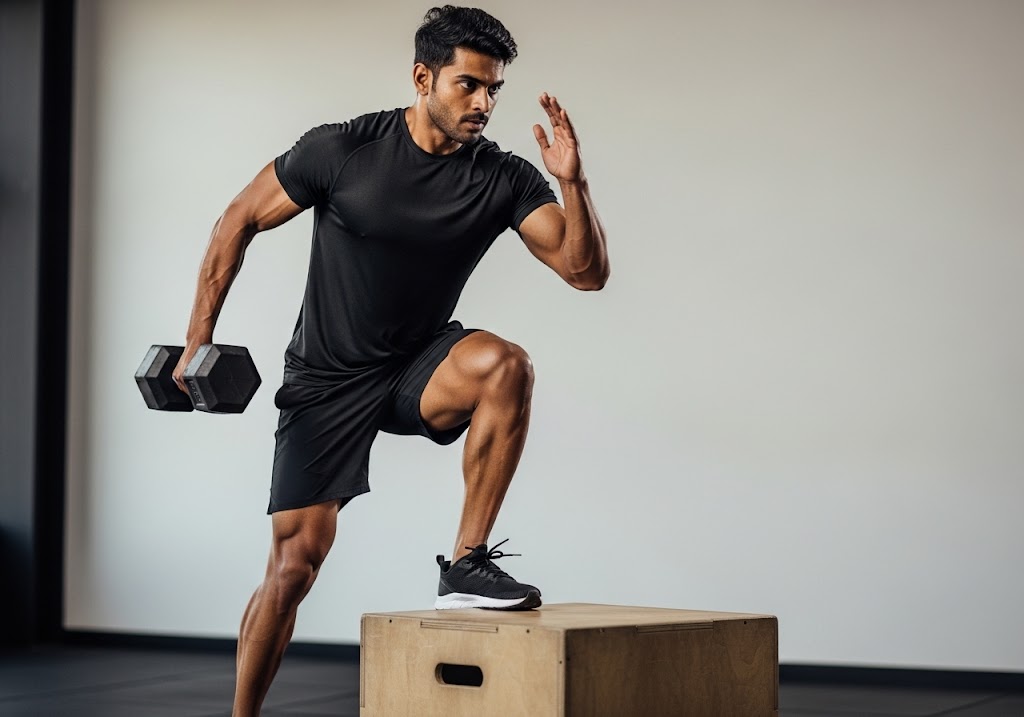
How to Incorporate Unilateral Exercises to Your Workout Routine
Strategic incorporation of unilateral exercises maximizes their benefits while complementing your existing training program effectively. Start by replacing some bilateral exercises with unilateral versions, or add single-limb movements as accessory exercises to address specific weaknesses and imbalances systematically for better overall results and balanced development.
| Integration Method | Frequency | Placement | Example | Benefits |
| Exercise Replacement | 2-3x per week | Replace bilateral moves | Single-arm rows for bent rows | Direct comparison |
| Accessory Addition | 2x per week | End of workout | Add lunges after squats | Address imbalances |
| Dedicated Session | 1x per week | Full workout | Unilateral-only training | Focus on weakness |
| Warm-up Integration | Daily | Start of session | Single-leg glute bridges | Activation |
| Superset Pairing | 2-3x per week | With bilateral moves | Lunges + squats | Pre-fatigue |
For comprehensive leg training that includes unilateral movements, calisthenics leg exercises provides excellent bodyweight variations for single-limb development.
Combined Upper-body Exercise and Plyometric Drill Circuit
This advanced circuit combines upper body unilateral exercises with explosive plyometric movements for comprehensive training that builds strength, power, and coordination simultaneously. Perform each exercise for 45 seconds with 15 seconds rest between exercises.
| Exercise | Type | Primary Benefit | Intensity |
| Single-Arm Push-ups | Strength | Unilateral pushing power | High |
| Single-Arm Burpees | Plyometric | Full-body explosiveness | Very High |
| One-Arm Rows | Strength | Pulling strength balance | High |
| Single-Arm Mountain Climbers | Plyometric | Core and cardio | High |
| Single-Arm Plank | Stability | Anti-rotation strength | Moderate |
| Single-Arm Medicine Ball Slams | Power | Explosive upper body | Very High |
Rest 2-3 minutes between complete circuits and perform 3-4 total rounds. This challenging workout builds unilateral strength while improving cardiovascular fitness and movement coordination through dynamic exercise combinations.
Combined Lower-body Unilateral and Bilateral Superset
This superset approach combines unilateral and bilateral lower body exercises for comprehensive leg development while addressing imbalances. Perform the unilateral exercise first, then immediately follow with the bilateral movement for maximum training effect.
| Superset | Unilateral Exercise | Bilateral Exercise | Sets | Rest |
| A | Single-Leg Squats | Regular Squats | 3 | 2 minutes |
| B | Single-Leg Deadlifts | Romanian Deadlifts | 3 | 2 minutes |
| C | Lateral Lunges | Sumo Squats | 3 | 2 minutes |
| D | Single-Leg Hip Thrusts | Hip Thrusts | 3 | 2 minutes |
This approach pre-fatigues each leg individually before challenging both legs together, ensuring balanced development while maximizing training efficiency and strength gains.
For complete fitness programs that incorporate unilateral training, best workout to lose weight and gain muscle includes single-limb exercises for balanced development.
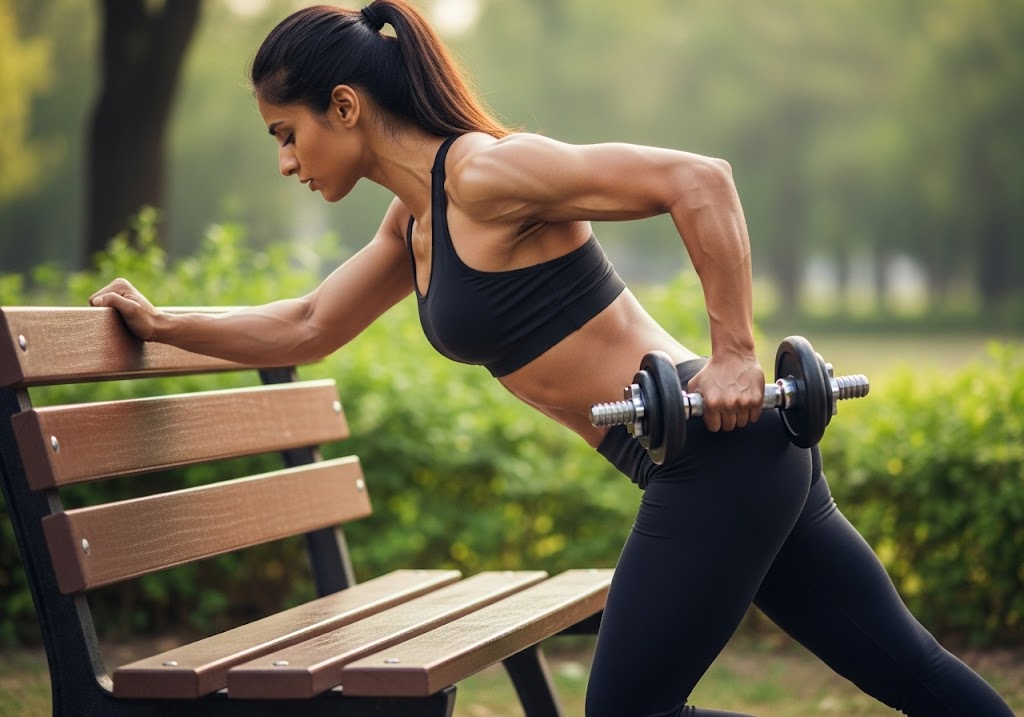
Unilateral Lower-body Superset
This focused lower body superset targets each leg independently through challenging unilateral exercise combinations. Perform exercises back-to-back with minimal rest to maximize training intensity and muscle fatigue.
| Superset | Exercise 1 | Exercise 2 | Reps Each Side | Sets |
| A | Reverse Lunges | Single-Leg Glute Bridge | 12-15 | 3 |
| B | Step-ups | Single-Leg Calf Raises | 15-20 | 3 |
| C | Single-Leg Deadlifts | Lateral Lunges | 10-12 | 3 |
| D | Single-Leg Squats | Single-Leg Hip Thrusts | 8-12 | 3 |
Rest 90-120 seconds between supersets and focus on perfect form throughout each repetition. This challenging workout builds unilateral leg strength while improving balance and coordination through demanding exercise combinations.
Learn how to do a perfect squat step-by-step and avoid common mistakes that hold you back.
The Best Unilateral Back Exercises
Unilateral back exercises address common imbalances while building impressive pulling strength and improving posture through targeted single-arm training. These movements challenge core stability while developing each side of your back independently for balanced development and strength.
| Exercise | Equipment | Difficulty | Primary Target | Core Demand |
| Single-Arm Dumbbell Row | Dumbbell, Bench | Intermediate | Lats, Rhomboids | High |
| One-Arm Cable Row | Cable Machine | Intermediate | Mid-traps, Lats | High |
| Single-Arm Pull-up | Pull-up Bar | Expert | Lats, Biceps | Very High |
| Single-Arm Lat Pulldown | Cable Machine | Beginner | Lats, Rear Delts | Moderate |
| One-Arm Landmine Row | Barbell, Landmine | Intermediate | Lats, Rhomboids | High |
For core strength that supports back training, how to get a six pack quick provides essential abdominal exercises that enhance unilateral exercise performance.
Unilateral Tricep Exercises
Unilateral tricep exercises build balanced arm strength while addressing common imbalances between dominant and non-dominant arms. These single-arm movements challenge stability while providing targeted tricep development that bilateral exercises cannot match for complete arm development and strength balance.
| Exercise | Equipment | Difficulty | Primary Target | Secondary Benefits |
| Single-Arm Overhead Extension | Dumbbell | Intermediate | Long head tricep | Core stability |
| One-Arm Cable Pushdown | Cable Machine | Beginner | All tricep heads | Grip strength |
| Single-Arm Tricep Dip | Parallel Bars | Advanced | Triceps, Chest | Shoulder stability |
| One-Arm Diamond Push-up | Bodyweight | Expert | Triceps, Core | Full body strength |
| Single-Arm Kickback | Dumbbell | Beginner | Lateral tricep head | Posture improvement |
For comprehensive back development that complements arm training, how to get a wider back provides essential exercises for balanced upper body development.
Unilateral Shoulder Exercises
Unilateral shoulder exercises build balanced deltoid development while improving shoulder stability and addressing common imbalances that lead to injury. Single-arm training challenges each shoulder independently while engaging core muscles for enhanced stability and functional strength development throughout all movement planes.
| Exercise | Equipment | Difficulty | Primary Target | Secondary Benefits |
| Single-Arm Overhead Press | Dumbbell | Intermediate | All deltoids | Core anti-extension |
| One-Arm Lateral Raise | Dumbbell | Beginner | Lateral deltoid | Shoulder stability |
| Single-Arm Front Raise | Dumbbell | Beginner | Front deltoid | Posture improvement |
| One-Arm Rear Delt Fly | Dumbbell | Beginner | Rear deltoid | Upper back strength |
| Single-Arm Arnold Press | Dumbbell | Intermediate | All deltoids | Rotation stability |
For compound movements that support shoulder development, compound dumbbell exercises includes single-arm variations for complete upper body training.
Unilateral Ab Exercises
Unilateral ab exercises challenge your core through rotational and anti-rotational movements that bilateral exercises cannot provide. These single-sided movements build functional core strength while addressing imbalances and improving real-world stability patterns for better athletic performance and daily activities.
| Exercise | Equipment | Difficulty | Primary Target | Secondary Benefits |
| Side Plank | Bodyweight | Intermediate | Obliques, Core | Shoulder stability |
| Single-Arm Plank | Bodyweight | Advanced | Anti-rotation core | Full body stability |
| One-Arm Farmer’s Walk | Dumbbell | Intermediate | Core, Grip | Posture improvement |
| Single-Arm Dead Bug | Bodyweight | Beginner | Deep core | Hip mobility |
| One-Arm Russian Twist | Weight/Bodyweight | Intermediate | Obliques | Rotational power |
For advanced bodyweight challenges, calisthenics handstand provides excellent unilateral training that builds incredible core and shoulder strength.
Conclusion
Unilateral exercises provide essential training benefits that bilateral movements cannot match for complete strength development and injury prevention. These single-limb movements reveal and correct imbalances while building functional strength, stability, and coordination that transfers to real-world activities and athletic performance. Incorporate unilateral exercises progressively into your routine, starting with basic movements and advancing to more challenging variations as your strength and balance improve over time.
Want to master the calisthenics handstand and take your skills to the next level? Whether you’re a beginner or pushing advanced skills, ISC – Indian School of Calisthenics offers expert guidance to help you master bodyweight training. Visit us at SRPF Ground, NH8, Goregaon (E), Mumbai – 400065. For class schedules, personalized coaching, or more details, call +91 77159 53218. Train smart, move better, and unlock your back strength with ISC.
Unilateral Exercises – FAQs
What is a unilateral exercise?
A unilateral exercise works one limb (arm or leg) at a time, allowing each side to develop strength independently without compensation from the other side.
What is a bilateral exercise?
Bilateral exercises use both limbs simultaneously, like regular squats or push-ups, where both arms or legs work together during the movement.
Are unilateral exercises worth it?
Yes, unilateral exercises correct imbalances, improve core stability, enhance balance, and build functional strength that bilateral exercises cannot provide effectively.
What is lateral and unilateral?
Lateral refers to side-to-side movement, while unilateral means using one limb at a time, though some exercises can be both lateral and unilateral.
What is an example of unilateral?
Common examples include single-leg squats, one-arm rows, lunges, single-arm push-ups, and step-ups that work one side at a time.
When should I do unilateral exercises?
Include unilateral exercises when addressing imbalances, improving stability, preventing injury, or adding variety to bilateral-dominant training programs regularly.
What is the unilateral method?
The unilateral method involves training one limb at a time to address imbalances, improve stability, and build independent strength in each side.
Is cycling an unilateral exercise?
No, cycling is bilateral as both legs work together simultaneously, though the alternating pattern creates some unilateral-like muscle activation patterns.
What is the difference between ipsilateral and unilateral?
Ipsilateral refers to the same side of the body, while unilateral simply means one-sided or using one limb at a time.
What is bilateral and unilateral?
Bilateral uses both limbs together simultaneously, while unilateral works one limb at a time for independent strength and stability development.
